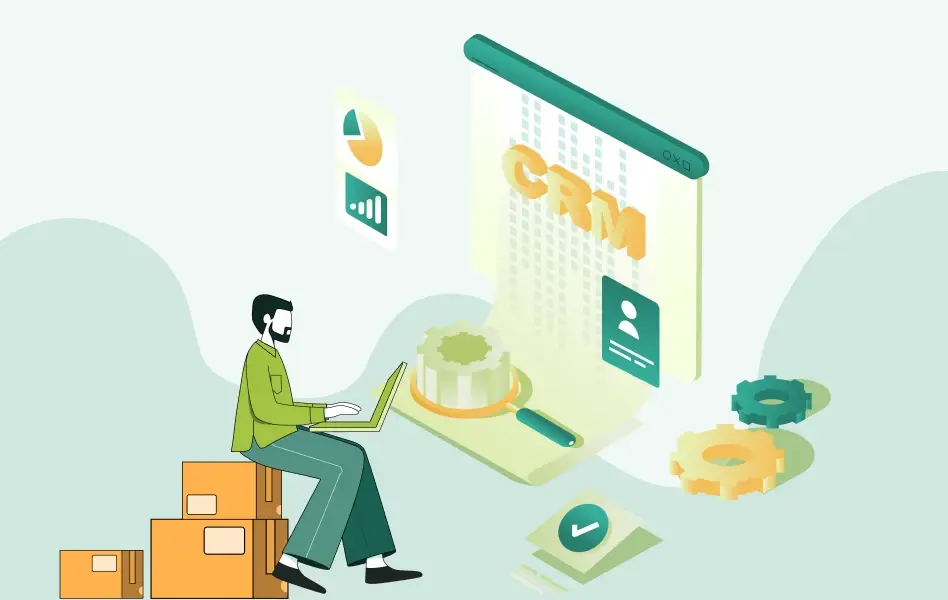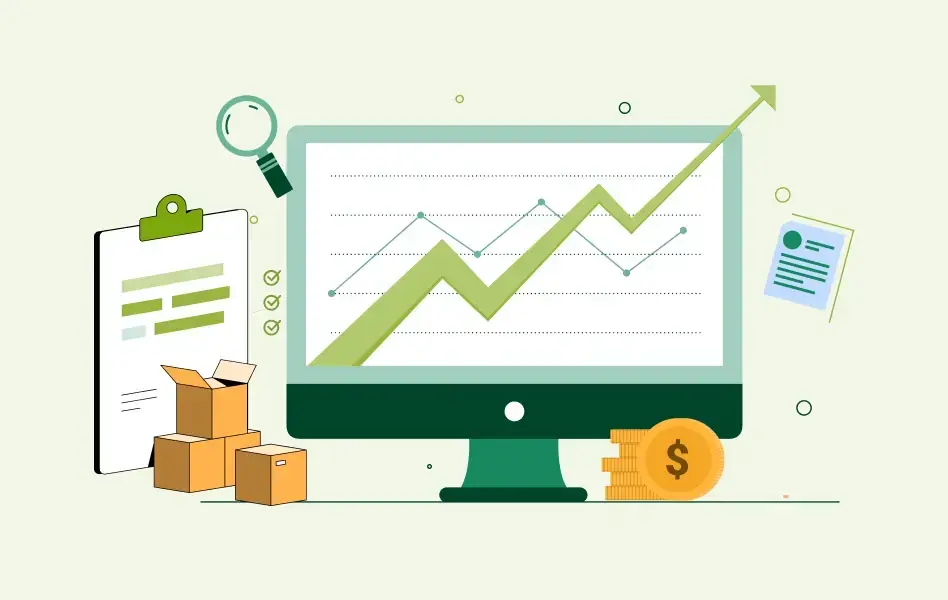Contents
- 1 Introduction
- 2 I. Understanding the Sales Pipeline
- 3 A. Definition and Significance of a Sales Pipeline
- 4 B. Differentiating Deal Stage and Pipeline
- 5 C. Exploring the Stages of a Sales Pipeline
- 6 D. Benefits of a Well-Structured Sales Pipeline
- 7 II. Building and Customizing Your Deal Pipeline
- 8 III. Analyzing Your Sales Pipeline
- 9 IV. Tracking and Managing Your Sales Pipeline
- 10 V. Sales Pipeline Forecasting
- 11 VI. Leveraging Machine Learning for Sales Pipeline Forecasting
- 12 B. Benefits of Using Machine Learning for Pipeline Forecasting
Introduction
In today’s competitive business landscape, managing your sales pipeline is crucial for achieving sales success and driving revenue growth. Sales pipeline analytics provides valuable insights into the progress and potential of your sales opportunities, enabling you to make informed decisions and optimize your sales process. This blog will explore the key aspects of sales pipeline analytics and how it can help you maximize your sales success. Let’s dive in!
I. Understanding the Sales Pipeline
A. Definition and Significance of a Sales Pipeline
At its core, a sales pipeline is a visual representation of your sales process. It tracks the progression of potential customers from initial contact to closing the deal. Understanding the stages and flow of your sales pipeline is essential for effective sales management and forecasting.
B. Differentiating Deal Stage and Pipeline
While deal stages refer to the specific steps within your sales process, the sales pipeline encompasses the entire customer journey, from prospecting to closing the deal. Each deal stage represents a milestone in the pipeline, allowing you to track progress and identify areas for improvement.
C. Exploring the Stages of a Sales Pipeline
Common stages in a sales pipeline include lead generation, qualification, presentation, negotiation, and closing. Understanding each stage’s purpose and requirements helps streamline your sales process and improves forecasting accuracy.
D. Benefits of a Well-Structured Sales Pipeline
A well-structured sales pipeline offers numerous advantages, including improved sales forecasting, increased visibility into the sales process, better resource allocation, and enhanced sales team collaboration. It enables you to identify bottlenecks, optimize workflows, and maximize revenue potential.
II. Building and Customizing Your Deal Pipeline
A. Importance of Setting Up and Customizing Your Deal Pipelines
Setting up customized deal pipelines tailored to your business needs enhances sales efficiency and clarity. It allows you to align your sales stages with your specific sales process, ensuring a consistent and streamlined approach to managing opportunities.
B. Understanding the Role of Deal Stages in the Pipeline
Deal stages within your pipeline represent your prospects’ specific steps before purchasing. Customizing and defining these stages enables you to track progress, assign tasks, and analyze conversion rates at each stage, providing valuable insights for decision-making.
C. Utilizing Free Deal Pipeline Software for Sales Progress Tracking
Numerous free deal pipeline software options are available, that offer features for tracking and managing your sales pipeline effectively. These tools provide visualization, automation, and collaboration capabilities, empowering your sales team to stay organized and focused on closing deals.
III. Analyzing Your Sales Pipeline
A. Importance and Purpose of Pipeline Analysis
Pipeline analysis provides valuable insights into the health and performance of your sales pipeline. By analyzing key metrics and trends, you can identify strengths, weaknesses, and areas for improvement, enabling data-driven decision-making.
B. Key Metrics for Sales Pipeline Analysis
1. Calculating Pipeline Value and Size: Determining the total value and size of your pipeline helps you assess your potential revenue and identify areas where additional focus may be needed.
2. Analyzing Pipeline Velocity and Conversion Rates: Tracking the speed at which deals move through your pipeline and analyzing conversion rates at each stage allows you to pinpoint bottlenecks and optimize your sales process for better efficiency.
3. Tracking Win Rates and Average Deal Size: Monitoring win rates (the percentage of deals won) and average deal size helps you evaluate the effectiveness of your sales strategies and forecast future revenue more accurately.
C. Best Practices for Effective Pipeline Analysis
To derive meaningful insights from pipeline analysis, consider the following best practices:
- Set Up a Clear Sales Process: Clearly define the stages of your sales and ensure consistency in their application across your team.
- Monitor and Update Pipeline Data Regularly: Regularly review and update your pipeline data to ensure accuracy and reflect the current status of your opportunities.
3. Identify Bottlenecks and Areas for Improvement: Analyze your pipeline data to identify bottlenecks, areas where deals get stuck, or drop off. This insight allows you to optimize your sales process and improve conversion rates.
IV. Tracking and Managing Your Sales Pipeline
A. Understanding the Concept of Pipeline Tracking
Pipeline tracking involves actively monitoring the progress and status of deals within your sales pipeline. It provides real-time visibility into your sales activities, allowing you to make timely adjustments and prioritize opportunities effectively.
B. Benefits of Sales Pipeline Tracking
Tracking your sales pipeline offers several benefits, including improved sales forecasting accuracy, increased accountability among team members, better resource allocation, and enhanced communication and collaboration within the sales team.
C. Utilizing Pipeline Tracking Tools and Templates
Various pipeline tracking tools and templates are available to help streamline the process. These tools enable you to visualize your pipeline, track deal stages, assign tasks, and generate reports, facilitating efficient sales pipeline management.
D. Best Practices for Effective Pipeline Tracking
To make the most of your pipeline tracking efforts, consider implementing the following best practices:
- Implement a Pipeline Tracker: Utilize a dedicated pipeline tracking tool or CRM software that offers comprehensive pipeline management features.
- Set Pipeline Key Performance Indicators (KPIs): Define and monitor KPIs relevant to your sales pipeline, such as conversion rates, average deal size, or sales cycle length.
- Use Sales CRM Software for Streamlined Tracking: Leverage the capabilities of sales CRM software to automate data entry, track interactions, and generate insightful reports, saving time and improving accuracy.
V. Sales Pipeline Forecasting
A. Definition and Importance of Pipeline Forecasting
Sales pipeline forecasting involves predicting future revenue based on the opportunities in your sales pipeline. Accurate forecasting helps you allocate resources effectively, set realistic sales targets, and make informed business decisions.
B. Differences Between Pipeline and Forecast
While the sales pipeline represents the collection of potential opportunities, a sales forecast predicts future revenue based on the probability of closing those opportunities within a specific timeframe. Understanding these differences is crucial for effective sales planning and resource allocation.
C. Benefits of Accurate Pipeline Forecasting
Accurate pipeline forecasting provides several advantages, including improved revenue projections, enhanced resource planning, increased sales team motivation, and better alignment between sales and other business functions.
D. Steps for Effective Pipeline Forecasting
To ensure effective pipeline forecasting, follow these steps:
1.Gather Historical Data and Analyze Trends: Review past sales data to identify patterns, trends, and seasonality. This historical analysis serves as a foundation for accurate forecasting.
2.Apply Forecasting Models and Techniques: Utilize statistical models, such as moving averages or regression analysis, to project future revenue based on your historical data and market trends.
3.Adjust Forecasts Based on Market Conditions and Insights: Continuously monitor market dynamics, customer behavior, and other external factors that may impact your sales pipeline. Adjust your forecasts accordingly to reflect the changing landscape accurately.
VI. Leveraging Machine Learning for Sales Pipeline Forecasting
A. Introduction to Machine Learning in Sales Forecasting
Machine learning techniques can enhance the accuracy and precision of sales pipeline forecasting. By training models on historical data and incorporating multiple variables, machine learning algorithms can uncover patterns and make more accurate predictions.
B. Benefits of Using Machine Learning for Pipeline Forecasting
Using machine learning for pipeline forecasting offers several advantages, such as improved accuracy, real-time updates, better identification of leading indicators, and the ability to handle complex datasets.
C. Steps to Implement Machine Learning in Pipeline Forecasting
To leverage machine learning for pipeline forecasting, follow these steps:
1.Data Preparation: Collect and clean your historical sales data, ensuring it is relevant and accurate for training your machine learning models.
2.Feature Selection: Identify the key variables and features that impact your sales outcomes and select them for model training.
3.Model Training and Evaluation: Utilize machine learning algorithms, such as regression or neural networks, to train your models on the prepared data. Evaluate their performance and fine-tune as necessary.
4. Integration and Automation: Integrate the trained models into your pipeline management system or CRM software to automate forecasting and receive real-time updates.
Conclusion
Sales pipeline analytics is a powerful tool for maximizing sales success and driving revenue growth. By understanding and optimizing your sales pipeline, analyzing key metrics, tracking progress, and utilizing advanced techniques like machine learning, you can make data-driven decisions, improve forecasting accuracy, and unlock your sales team’s full potential. Implement the strategies and best practices outlined in this blog to transform your sales pipeline management and achieve exceptional sales results.






































































































